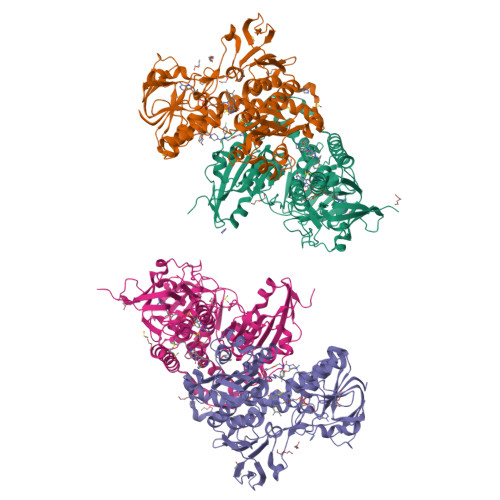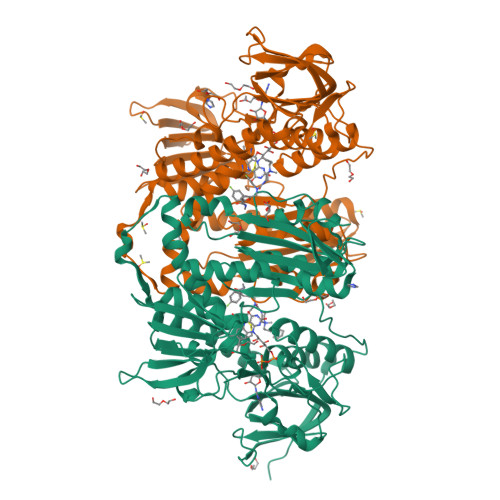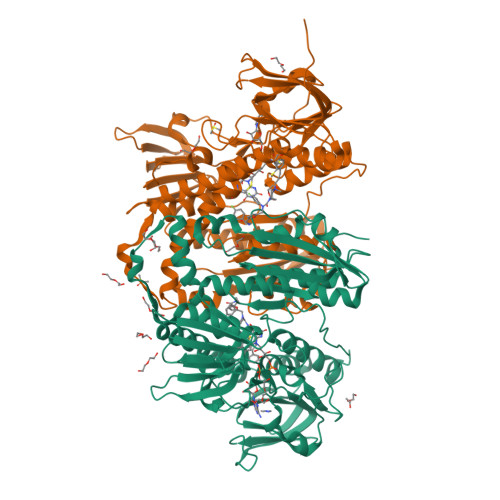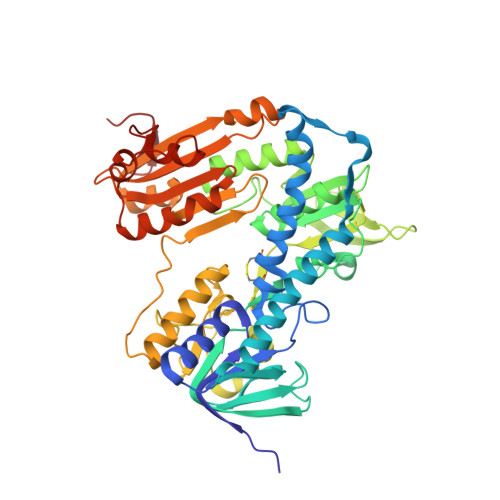Fragment Merging, Growing, and Linking Identify New Trypanothione Reductase Inhibitors for Leishmaniasis.
Exertier, C., Salerno, A., Antonelli, L., Fiorillo, A., Ocello, R., Seghetti, F., Caciolla, J., Uliassi, E., Masetti, M., Fiorentino, E., Orsini, S., Di Muccio, T., Ilari, A., Bolognesi, M.L.(2024) J Med Chem 67: 402-419
- PubMed: 38164929
- DOI: https://doi.org/10.1021/acs.jmedchem.3c01439
- Primary Citation of Related Structures:
8PF3, 8PF4, 8PF5 - PubMed Abstract:
Trypanothione reductase (TR) is a suitable target for drug discovery approaches against leishmaniasis, although the identification of potent inhibitors is still challenging. Herein, we harnessed a fragment-based drug discovery (FBDD) strategy to develop new TR inhibitors. Previous crystallographic screening identified fragments 1 - 3 , which provided ideal starting points for a medicinal chemistry campaign. In silico investigations revealed critical hotspots in the TR binding site, guiding our structure- and ligand-based structure-actvity relationship (SAR) exploration that yielded fragment-derived compounds 4 - 14 . A trend of improvement in Leishmania infantum TR inhibition was detected along the optimization and confirmed by the crystal structures of 9 , 10 , and 14 in complex with Trypanosoma brucei TR. Compound 10 showed the best TR inhibitory profile ( K i = 0.2 μM), whereas 9 was the best one in terms of in vitro and ex vivo activity. Although further fine-tuning is needed to improve selectivity, we demonstrated the potentiality of FBDD on a classic but difficult target for leishmaniasis.
Organizational Affiliation:
Institute of Molecular Biology and Pathology (IBPM) of the National Research Council of Italy (CNR), c/o Department of Biochemical Sciences, Sapienza University of Rome, Piazzale A. Moro 5, Roma 00185, Italy.
























